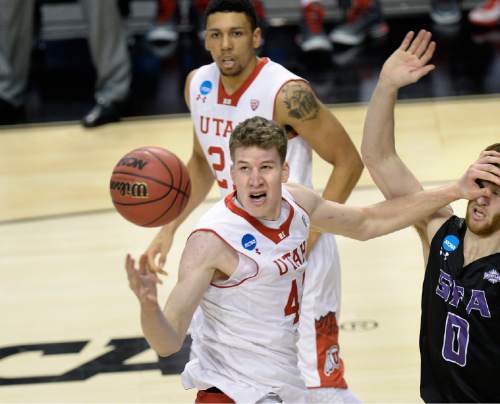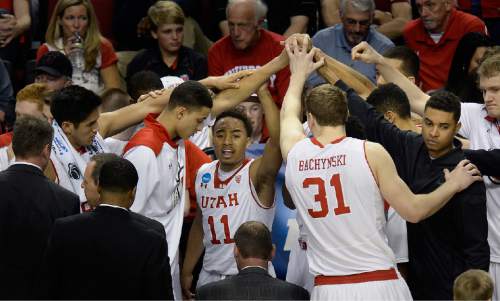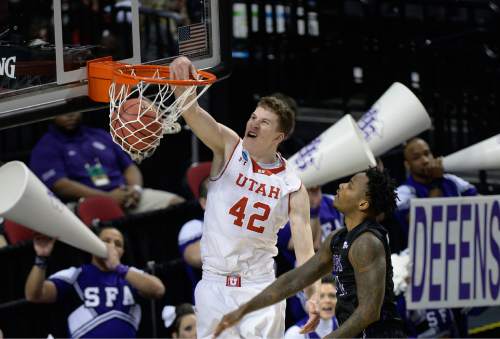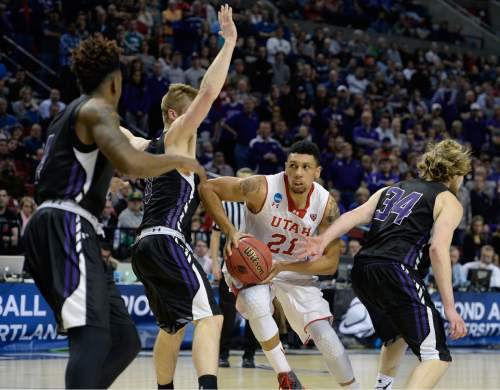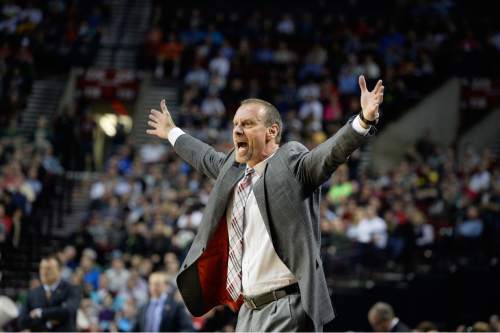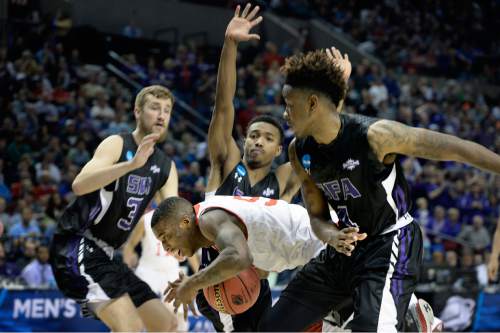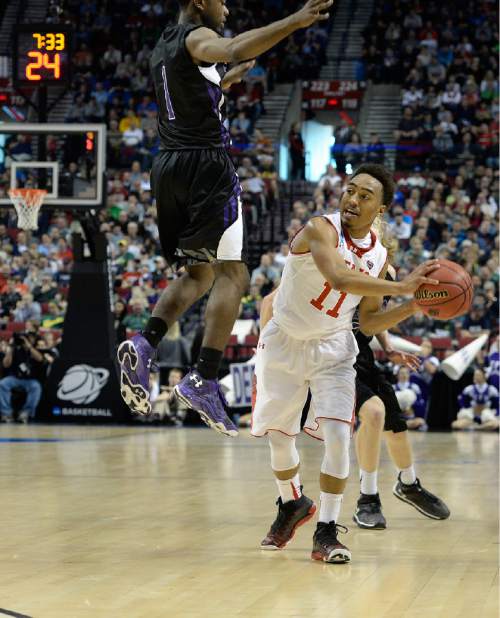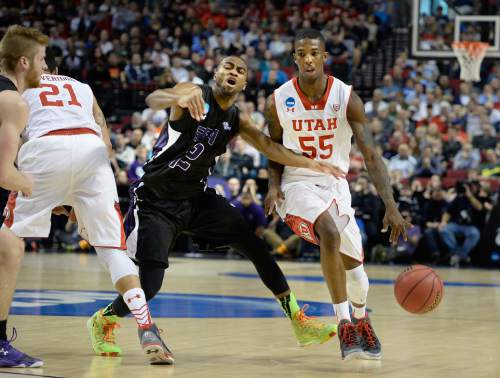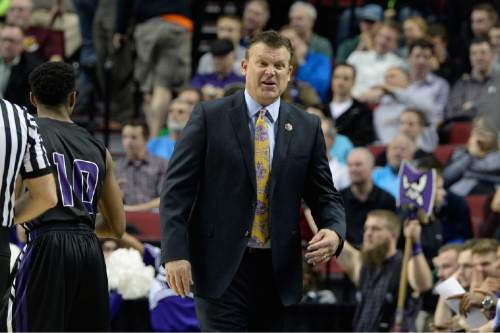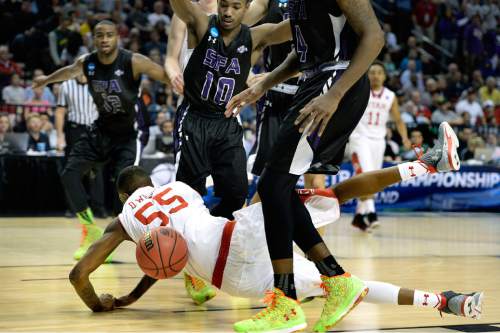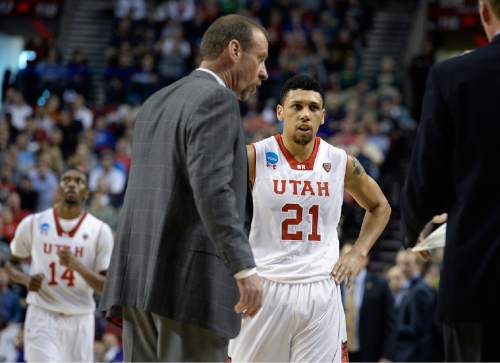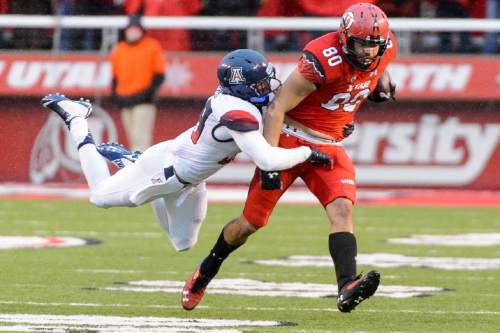This is an archived article that was published on sltrib.com in 2015, and information in the article may be outdated. It is provided only for personal research purposes and may not be reprinted.
By owning its own television network, the Pac-12 Conference has set a precedent of doing things its own way, for better or for worse.
In the next year, the conference is rolling out another operation that it believes could help save its schools money when handling radio deals, corporate sponsorships and more for athletic departments. But while the Pac-12 says it could give the schools the benefit of extra dollars, it's a potential shaker in the relatively obscure field of multimedia rights that could be a risk for any school that tries it.
For an athletic department like Utah's — whose multimedia rights deal is expiring, and whose budget lags behind most other Power-5-conference schools — an important decision looms: Do things the same way, or try a gamble with the conference that could boost its revenue.
"We'll have some options," athletic director Chris Hill said. "We'll have a chance to figure out what works best for us."
The multibillion-dollar TV deals are the ones that make headlines, but multimedia rights are an important facet of any athletic department's revenue. It consists of the money the school makes for signs in venues, billboards, partnerships and radio broadcasts.
The Utes reported $2,679,824 in revenue from their multimedia rights agreement in the previous fiscal year, almost 5 percent of its budget. Many schools, particularly big brands such as Oregon and USC, report much more.
In the past, schools have had two options: Negotiate these deals in-house, or put them in the hands of a third-party company for a guaranteed annual licensing fee. The Utes, like almost every other Power-5 program, have chosen the latter. A company called Outreach Media has an on-campus division called Utah Sports Properties that handles these deals.
The Pac-12 proposed a third option: It will offer these services through the conference, the first league to propose such a plan. The benefit is all profit, after operating costs, would potentially go to the schools. In the current third-party model, the company pockets all profit above the annual fee.
With the unpredictable nature of the market, it's too difficult to accurately estimate how much money schools could save. But the Pac-12 commissioned a study from another company, JMI, to analyze the benefits. The league hopes it saves millions of dollars for each school.
"It is important because it creates a new option for our schools to directly control their rights assets and work collaboratively together to increase their revenue," Commissioner Larry Scott said in a statement to The Tribune. "A primary goal of the new entity is to allow schools to retain most of their value rather than having significant profits taken by third-party entities."
The "entity" doesn't yet have a name or employees, but the Pac-12 anticipates schools will begin to sign up in the next year. One of those schools could be Utah, which hopes to figure out its next multimedia contract by the end of the 2015-16 school year.
It could be especially lucrative for the Utes, who negotiated their previous contract in the Mountain West and find themselves paying for expensive facilities upgrades. Even savings of a million dollars per year could help pay for full cost of attendance stipends, coming into effect this fall.
But what are the risks? As cited in a report by the San Jose Mercury News, while the third-party companies assume all profits, they also assume all losses. Whether they have profits or losses, they pay the schools the same annual fee.
There's also a question of experience: While companies like IMG and Learfield have longstanding relationships with companies, the Pac-12 would be a startup in the good ol' boys group. The Pac-12 would try to hire reps with experience in the industry, but it could take time to forge the same relationships and savvy now provided by the third-party groups.
The Pac-12 is aware of the risks, but it thinks the potential benefits are worth the gamble. Since the Pac-12 also owns its own TV network, it could negotiate more lucrative deals by packaging multimedia rights with broadcast exposure for interested corporate partners.
It's a somewhat nebulous and difficult-to-understand business, but one that could be a boon to the Pac-12. The conference has received skepticism for how it has handled its TV network, especially with a stalemate with DirecTV. As the SEC and Big 10 are expected to push ahead in per-school revenue, the Pac-12 is looking for ways to keep up.
Creating success in other multimedia won't make up the ground, but it could help the league keep up in the college sports race.
"Our member institutions and their athletic departments are under financial pressure," Scott said. "We view collaboration on [multimedia] rights as the next logical step to help them create more revenue and exert more control of their brands."
Twitter: @kylegoon —
Pac-12 entering multimedia rights arena
• Over the next year, the Pac-12 will create a new marketing arm that schools can opt into to negotiate multimedia rights.
• Multimedia rights include radio broadcasts, stadium and arena signage, and corporate partnerships.
• The Pac-12 is the first conference to offer its own such service, which is traditionally handled by third-party companies.
• The Utes have a multimedia contract that runs through 2017, and they hope to set up their next contract by 2016.



